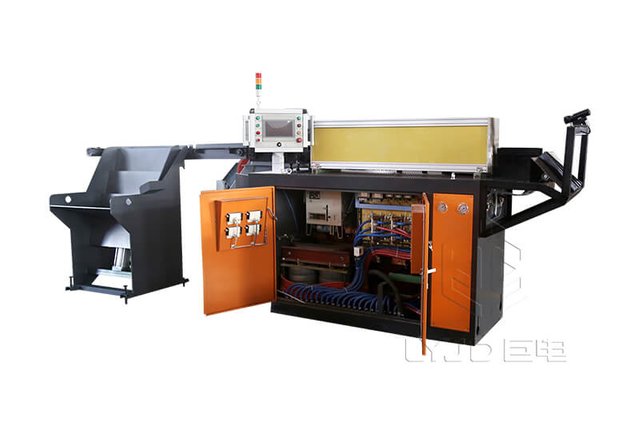Heat treatment of steel is an important link in steel forging and steel rolling production. Heat treatment maximizes the potential of steel. An induction heating furnace is a new type of equipment for the heat treatment of steel.
The induction heating furnace uses the induction heating principle of medium frequency current to heat treat steel. Because of its fast heating speed, the production cycle can be greatly shortened. In addition, the heat of the induction heating furnace is evenly distributed, which can effectively avoid problems such as local overheating and deformation. At the same time, induction heating furnaces have high energy utilization efficiency, which can save energy and reduce production costs.

Induction Heating Furnace Process Characteristics
The PLC module is used to control the heating system and transmission system. The induction heating system adopts output voltage closed-loop control, and the transmission system implements speed closed-loop control to ensure that the transmission speed of the mechanical part and the output power of the induction heating part remain constant.
Use process parameter classification storage technology to ensure that products of each specification are produced under the same process conditions. Use temperature compensation technology to eliminate the impact of temperature fluctuations on product quality.
Advantages of Induction Heating Furnace
Fast heating speed: The induction heating furnace uses medium and high-frequency current to generate eddy current to heat the metal workpiece, so the heating speed is very fast, which can greatly shorten the production cycle.
High heating efficiency: The induction heating furnace has uniform heat distribution, which can effectively avoid problems such as local overheating and deformation. At the same time, its energy utilization rate is high, which can save energy and reduce production costs.
Heating temperature and time can be precisely controlled: The heating temperature and time of the induction heating furnace can be precisely controlled according to specific process requirements, so high-quality metal materials and parts can be produced.
Environmental protection: Induction heating furnaces produce very little noise and pollution when working, so they are environmentally friendly heating equipment.
Easy operation: The operation of the induction heating furnace is very simple. You only need to put the metal workpiece into the sensor and enter the corresponding process parameters.
Induction Heating Steps
Raw material preparation: Prepare metal workpieces that need to be heated, which can be metal blanks, alloy powders, etc., selected according to specific product requirements.
Heating process: Put the metal workpiece into the sensor, and then enter the corresponding process parameters, such as heating temperature, heating time, etc. The high-frequency current in the inductor will generate eddy currents in the metal workpiece. When these eddy currents flow in the metal, they will generate heat due to resistance, causing the metal workpiece to heat up quickly and melt.
Cooling treatment: After heating is completed, the metal workpiece needs to be cooled to avoid problems such as deformation and cracking.
Induction Heating Applications
High-frequency quenching heat treatment for various automobile and motorcycle parts: such as crankshaft connecting rods, piston pins, camshafts, valves, various gears in the transmission, various forks, various spline shafts, transmission half shafts, various High-frequency quenching hot spots such as rocker arms and rocker arm shafts.
High-frequency quenching heat treatment of hardware tools: such as vise, hammers, powerful pliers, and wrenches. Hydraulic components such as plungers of plunger pumps, rotors of rotor pumps, reversing shafts on various valves, gears of gear pumps, etc. are quenched by high frequency.
High-frequency quenching heat treatment of various power tool gear shafts. Various woodworking tools such as axes, planers, etc. for heat treatment.
Heating and bending of steel plates: through-heat forming of standard parts and fasteners. Hardware tools such as platinum, wrenches, etc. are heated and formed through heat. Prospecting drill rod taper shank extrusion. Thermal forming of steel pipes such as bent pipes, etc.
Welding of carbide cutting tools: such as turning tools, milling cutters, and reamers.
Welding of diamond cutter heads: such as diamond saw blades, grinding tools, and sawtooth welding.
Summarize
The induction heating furnace process is a complex and delicate process that requires operators to have professional skills and knowledge to ensure the production of high-quality metal materials and parts.<>